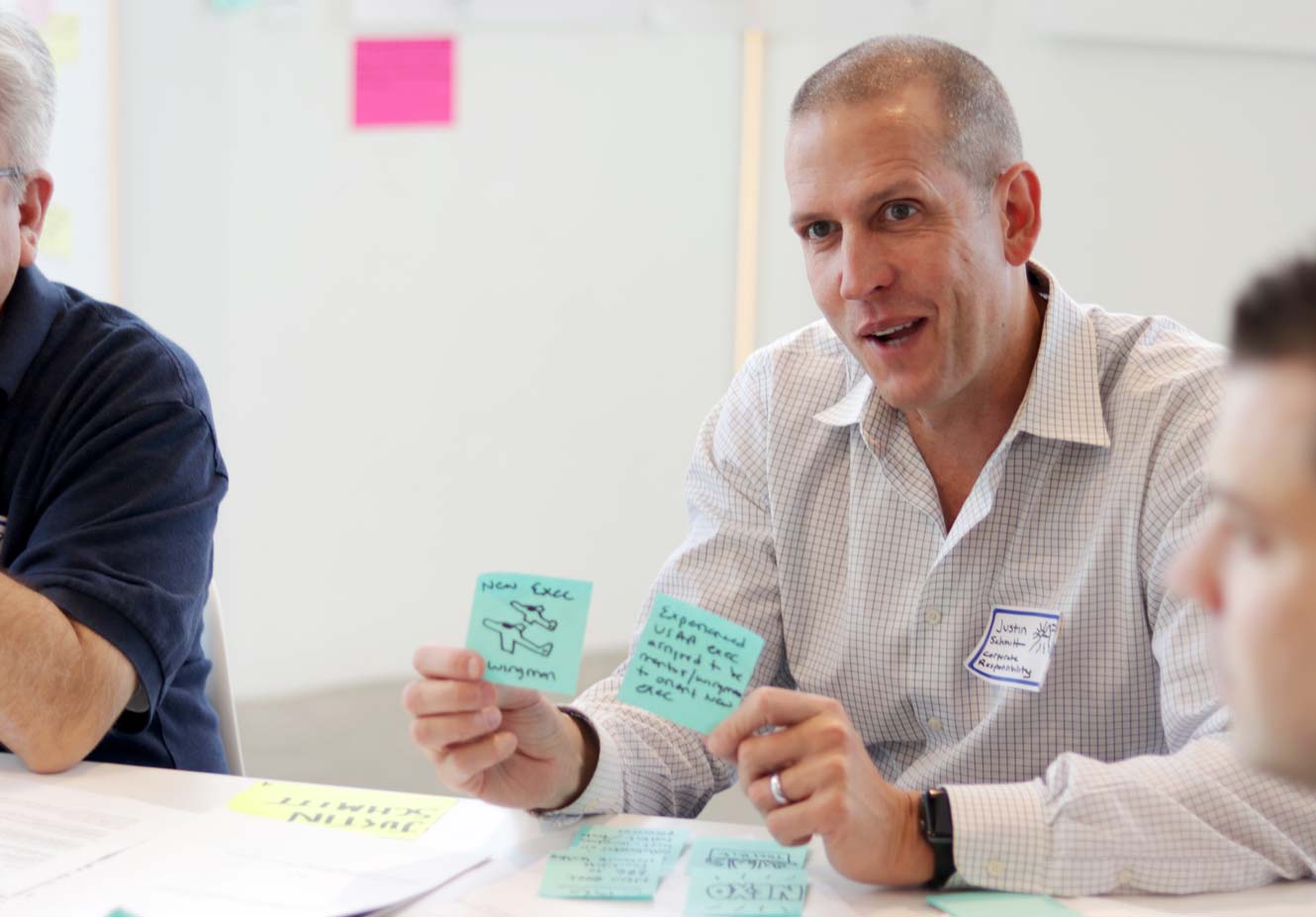Wild Cards
Wild Cards bring unexpected examples and influences to your team's ideation session, to encourage the exploration of new ideas and solutions.
This activity gives your team an opportunity to consider ambitious, fanciful, and even bizarre ideas without being concerned with their practical implications. Wild Cards pair analogous or completely unrelated brands, services, and concepts to help your team reimagine what is possible for your project. A Wild Cards activity can typically be the second part of an ideation exercise, following Idea Vignettes.
You can use Wild Cards to:
- Encourage ideation beyond what is feasible in the current state of an experience.
- Generate a large volume of ideas and concepts - emphasizing quantity as a means to achieve quality!
- Communicate a grander, more aspirational product vision for your team's project.
Prerequisites
A team can ideate with Wild Cards once they have:
- A summary of member research insights or a Value Proposition Canvas that documents real member pain points, needs, or opportunities.
- An As-Is Journey Map that maps member pain points in the current experience across a specific period of time.
This Is What It Looks Like



Template Downloads
Let’s Get Started
1 Agree on a time limit.
Decide as a team how much time to spend generating ideas. We recommend 15–20 minutes.
2 Pain point, meet Wild Card.
Pick one of the pain points identified in your research or As-Is Journey Map and pair it with one of the provided Wild Cards. The goal is to layer the example in the Wild Card on top of the pain point your team is trying to resolve. The Wild Card represents a general approach to problem solving that we want to try to apply to this specific problem. "How might we make financial advice more like Google Maps and provide a plan that reroutes as you go based on real-time, personalized information?"
Download printable Wild Cards.
3 Draw the idea.
On one sticky note, draw a picture illustrating the idea. Focus on a key moment or representation that highlights why the idea is compelling. It’s okay if your drawing isn’t a masterpiece.
4 Describe the idea.
On another sticky note, add a headline and brief explanation of the idea. Be clear, direct, and succinct about the value of the idea. Write legibly.
5 Repeat.
The pairing of your drawing and description is called an Idea Vignette. Continue to pair pain points with Wild Cards to generate ideas and make more Idea Vignettes until the allotted time is up. Think less. Write and draw more. Strive for a state of flow.
Watch Out
If you are thinking about the validity of an idea, you’re likely self-editing. Draw it. Write it down. Move on. Focus on quantity to achieve quality!
5 Review the vignettes.
Post all the vignettes to the wall. First, review the ideas quietly, without discussion. Then, play back each idea to the whole team. Spend one minute per idea. Restrict your discussion to clarifying questions about what the idea represents.
Bonus Points
Capture additional thoughts or ideas as you review the vignettes (either as revisions of the original idea or as completely new ideas).
5 Light grouping.
Identify duplicate and/or complimentary ideas. Group vignettes with a lot of overlap together to refine and consolidate the pool of ideas.
Next Steps
Your team can now complete a plot these new ideas on a Prioritization Grid to consider the impact and feasibility of each Idea Vignette.